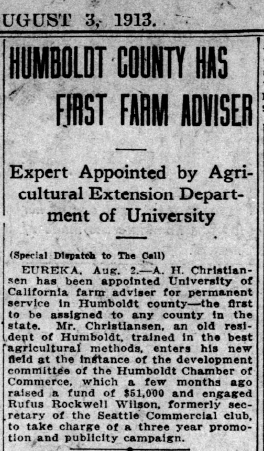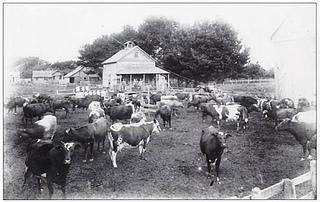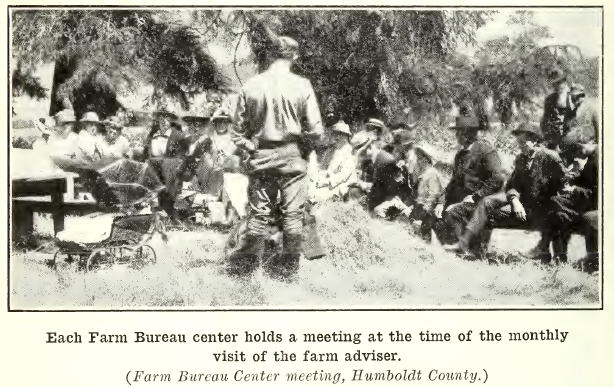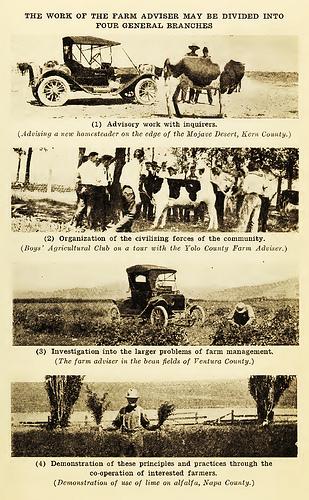Our History
History of Cooperative Extension in Humboldt
That Humboldt county is the first in the state to take advantage of the new [Cooperative Extension], and give her farmers the advantage of scientific advice on farm problems, is a matter of pride to her citizens, and is proving of great value to the agricultural industry of the county” - L. Irvine

How it all began: A brief history of Cooperative Extension
The 1914 legislation that created the nation-wide Cooperative Extension system was built on a foundation of several other key acts. The Morrill Act of 1862, signed by President Abraham Lincoln, created a national university system, known as the “land-grant” school system, to teach the practical subjects of agriculture and engineering. In California, the first land-grant college was the University of California (UC), which was founded in Berkeley in 1868. Another key piece of legislation that made Cooperative Extension possible was the Hatch Act of 1877, which created federally funded agricultural experimental stations used for the development and demonstration of practical farming methods to help meet the needs of a growing nation. Finally, in order for agricultural and home economics research and practices to reach rural populations, the Agricultural Extension Service (now Cooperative Extension) was formed with the passage of the Smith-Lever Act of 1914. In cooperation with the US Department of Agriculture, Cooperative Extension was to act as a bridge between the land-grant universities and farmers, providing information, advice, and problem-solving assistance to farmers.

In July 1913, anticipating the passage of the Smith-Lever Act, Humboldt County, with the support of the newly formed farm bureau, appointed Andrew H. Christiansen as the first Cooperative Extension farm advisor in California. Humboldt residents were proud of their initiative, which reflected their eagerness to improve the county’s agricultural industries. With the new farm advisor, Arcata, Ferndale and Fortuna established the first 4-H clubs in California in October 1913, formalizing youth education and civic engagement as a cornerstone of the Cooperative Extension program.


While much within UCCE Humboldt has changed since its inception, many of its programs continue to address similar themes in a changing world. For example, since the 1910s, UCCE Humboldt has emphasized economic development; finding efficiencies; uses and markets for byproducts of production; conservation of energy; integrated pest management in the home, garden and farm; new crop development; food preservation; and business planning and family succession. Since the 1980s, adapting practices to help minimize impacts on the environment has been a major focus of UCCE Humboldt’s programs. Furthermore, there have been changes in the communities that are served by UCCE Humboldt’s programs, with specific attention now given to minority and other underserved audiences, as well as urban and suburban audiences. Whether it was a 100 years ago or just last week, UCCE Humboldt advisors provide practical solutions to life’s problems, connect the community to the informational resources of the University of California, and provide trusted research-based solutions.
